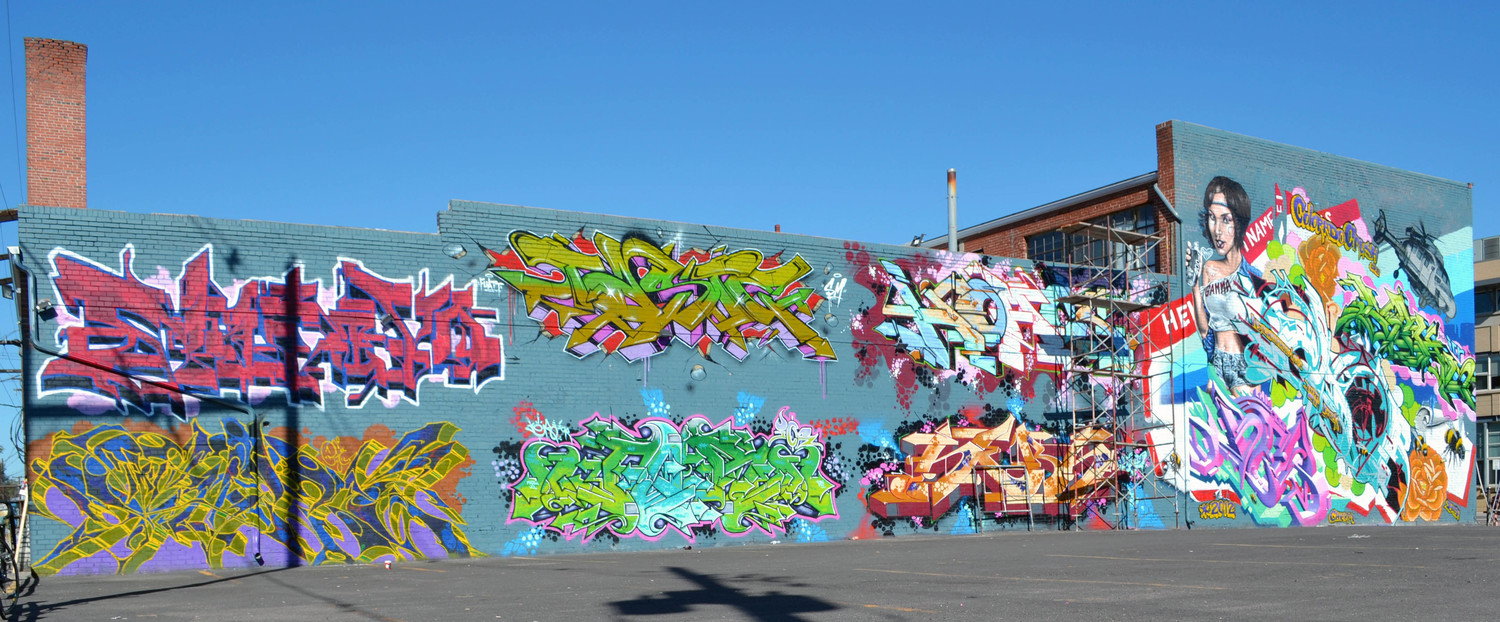Realizing Denver’s dreams for arts and culture: An interview with Kent Rice
11/7/18 / Karla Raines

In mid-October, Denver announced the retirement of Kent Rice the Executive Director of Denver Arts & Venues. Kent came into city government as an appointee under Mayor John Hickenlooper. What he thought might be a short-term gig turned into a career-defining 8-year journey.
I had the pleasure of working with Kent and his wonderful team on IMAGINE 2020: Denver’s Cultural Plan. His announcement provided an opportunity to gather his observations on Denver’s thriving arts scene and his wish list for the future.
During our 30-minute phone conversation we landed on a set of critical success factors that are evident across Denver – invest, innovate, listen to the public, collaborate, and committed long-term leadership. I’ll come back to those factors in just a bit.
It’s important to recall that in 2011 Denver had two different agencies working in the arts – the Denver Office of Cultural Affairs and Denver Theater & Arenas. Kent’s initial task was realizing the synergies from the merger of the two into what is now known as Denver Arts & Venues. Those synergies have been notable. Kent shared with me that the business side of Denver Arts & Venues has grown from $21 Million to $54 Million through expanded offerings at the iconic Red Rocks Amphitheatre and other city-owned facilities. That increased funding has fueled more arts and cultural programs across the city as well as two significant renovations of McNichols Civic Center. We are leveraging our assets to invest more in cultural programs and amenities for the public.
You may recall that the McNichols Building was a built as a Carnegie Library in 1909 and over the years had served as remote office space for city employees before it was shuttered for a period of time. When Arts & Venues took over the space they laid out a plan to revitalize the building as a cultural hub – and that dream has been realized. You can wander into the building today and find yourself practicing yoga accompanied by the Colorado Symphony or enjoying the artistry of tattoo art as you consider the beauty of religious art. That investment has realized tremendous returns for Denver.
City staff are inspired to imagine what might be possible and then bring their visions to life. As the public’s desire for arts and culture becomes less traditional the opportunities to innovate manifest in new combination and unexpected offerings. The recent Street Art Ink Runway Show is a case in point. The show was the brainchild of Arts & Venues staff who sought to bring tattoo art into the mainstream – and there is no more mainstream venue than a city-owned facility. The fashion show was a big hit.
A strong public response demonstrates the value of listening. When you listen to the public you can deliver programs that resonate. Kent noted that Denver residents share several traits with cultural consumers nationally as revealed in CultureTrack ‘17. Denver residents seek authentic experiences. They also want to record their experiences digitally and pair them with food and beverage options. They also crave broad experiences. Fortunately, Denver has variety in spades. Our restaurant scene is amazing; so too are our beverages.
Denver is known as a city that believes you have to collaborate to bring unique cultural offerings to the city. Case in point: CRUSH. CRUSH is an annual mural arts exhibition featuring the creation of approximately 100 murals for one week each year. CRUSH relies on a diverse array of collaborators ranging from local to international artists, arts organizations, landlords, civic organizations, businesses and the City.

Source: crushwalls.org
A longtime partner in CRUSH is Denver Urban Arts Fund, a program of Denver Arts & Venues. The Fund facilitates the creation of new murals in perpetually vandalized areas throughout the City and County of Denver. Since its inception the program has facilitated the creation of nearly 250 murals with local artists.
CRUSH is a terrific example of the importance of committed long-term leadership. Another example can be found at the Clyfford Still Museum. You may not recall that the City and County of Denver is the legal owner of Still’s art. (Talk about a public art collection.) In 2016 Denver lent a number of paintings for a European exhibition. As the Museum reported, it was “the first comprehensive survey of the eponymous American postwar movement to be mounted in Europe in more than 50 years.”
“As a city, Denver pursued and received the honor of creating the Clyfford Still Museum and becoming home to the world’s most intact public collection of an American artist—placing us in an elite position within the art world. The loan of these nine works will turn a global spotlight on Denver’s reputation as an international cultural destination.” (Source: Clyfford Still Museum)
Kent noted how proud Denver residents would be to know that the placards under each painting on exhibit stated that they were lent by the City and County of Denver. The Clyfford Still Museum wouldn’t be in Denver if it weren’t for committed long-term leadership across city government, arts organizations, philanthropists, civic organizations and the private sector.
As I wrapped up my interview with Kent I lent him my magic wand and asked him, “What one thing would you wish for Denver’s future arts scene?”
Of course, Kent came back with a list of things.
Kent’s 3 wishes for Denver
- Elected officials who support arts, culture and the creative sector – Kent stated that the continuity of commitment across Denver Mayors over the past several decades has made a big difference. So too is support from City Council. “It makes a huge difference,” he said.
- Cultural leaders who innovate and collaborate – The other area of critical leadership, according to Kent, is in the cultural sector. Fortunately, Denver has an abundance of cultural leaders who innovate and collaborate. There is evidence of this across the City, from commissions for new works of art, to first-ever exhibitions and one-of-a-kind productions.
- Voters who continue to support the SCFD – The Scientific and Facilities District is a special taxing district approved by the voters that devotes 1 cent on every $10 to arts, cultural and scientific offerings in the metro Denver area. The district raises over $50 Million annually. It will sunset in 2030 unless reauthorized by the voters. SCFD funding is vital to over 270 arts, cultural and scientific organizations across the region.
To see Kent’s wish list in action one only has to think back to Yo-Yo Ma’s concert in Denver on August 1st. He selected our city to kick-off a two-year international journey to six continents. His stop illustrated the power of collective leadership, collaboration and innovation. The day started with a performance at Civic Center Park, with student musicians from Hamilton Middle School and Isaac Slade of the Fray. He also stopped by Youth on Record to perform with students. His day ended in a sold-out Bach concert with Colorado Symphony at Red Rocs Amphitheatre.
All together Kent’s three wishes align with an insight that Corona developed through its cultural planning work, namely the importance of collective will and community leadership. “You can’t make real progress without it. There has been a continuous stream of it,” Kent remarked.
Kent wrapped up by saying that serving as Executive Director of Denver Arts & Venues “has been a thrill and privilege. I am very very lucky.”
Thanks to Kent and countless others we have the critical success factors down in spades.
- Invest
- Innovate
- Listen
- Collaborate
- Committed long-term Leadership
We are the lucky ones, Kent. Thank you!